Phone:
(+65)8319-0742
OSHA (Occupational Safety and Health Administration) has established strict regulations to ensure the safety of workers in industries that utilize scaffolding. Compliance with these scaffolding safety standards is crucial to prevent accidents, injuries, and fatalities. In this guide, we will provide you with a comprehensive overview of the OSHA scaffolding requirements for 2023, including scaffold platform specifications, scaffolding inspection checklist, OSHA fall protection requirements, scaffold training requirements, and OSHA construction safety guidelines.
Key Takeaways:
- OSHA has established specific requirements for scaffolding to ensure worker safety.
- Compliance with OSHA scaffolding requirements is essential to prevent accidents and injuries.
- Scaffolding platforms must meet certain specifications, including planking, width, overhang, and gaps.
- Guardrails and fall protection systems are mandatory for scaffolding above a certain height.
- Regular inspections and training are necessary to ensure scaffold safety.
Capacity and Structural Integrity
To ensure the safety and stability of scaffolding, OSHA regulations mandate that each scaffold and scaffold component possess the necessary capacity and structural integrity. Compliance with these requirements is crucial to prevent scaffold failure and potential accidents. Here are the key factors to consider:
Weight Capacity
According to OSHA guidelines, scaffolds must be capable of supporting their own weight and a minimum of 4 times the maximum intended load without failure. This weight capacity ensures that the scaffold can withstand the load it is intended to bear, providing a secure working platform for workers.
Structural Soundness
Direct connections to roofs and floors, as well as counterweights on adjustable suspension scaffolds, must be designed to resist tipping moments. This ensures the stability of the scaffold and prevents any potential hazards caused by imbalance or instability.
Qualified Design and Construction
Qualified individuals are responsible for designing, constructing, and loading scaffolds according to specific specifications. These qualified persons possess the necessary expertise to ensure that the scaffold’s design and construction meet the required safety standards, guaranteeing its structural integrity.
| Key Considerations | Requirements |
|---|---|
| Weight Capacity | Scaffolds must support their own weight and at least 4 times the maximum intended load without failure. |
| Structural Soundness | Direct connections and counterweights must be designed to resist tipping moments. |
| Qualified Design and Construction | Scaffolds must be designed, constructed, and loaded by qualified individuals. |
Meeting these capacity and structural integrity requirements is crucial in preventing scaffold failures and ensuring the safety of workers. By adhering to OSHA regulations, employers can create a secure working environment, reducing the risk of accidents and promoting workplace safety.
Scaffold Platform Construction

Scaffold platforms are a critical component of ensuring the safety and stability of scaffolding systems. Proper construction and design of scaffold platforms are essential to prevent accidents and provide a secure working environment for workers. This section will discuss the important factors to consider for scaffold platform construction, including scaffold platform planking, platform width, platform overhang, platform gaps, and walkway requirements.
Scaffold Platform Planking
In accordance with OSHA regulations, scaffold platforms on all working levels must be fully planked or decked. This ensures a stable and secure surface for workers to perform their tasks. The planking material should be suitable for the intended load and must be free from any defects that could compromise its structural integrity. Regular inspections should be conducted to identify and replace damaged or deteriorated planks promptly.
Platform Width
The platform width is an important consideration for scaffold construction. The standard width for scaffold platforms is 18 inches, providing sufficient space for workers and tools. However, in situations where a wider platform is required to accommodate specific tasks or equipment, the width may exceed the standard recommendation. It is crucial to ensure that the platform width meets the necessary requirements without compromising the stability and safety of the scaffold.
Platform Overhang
The platform overhang refers to the extension of the platform beyond its supports. OSHA guidelines state that the platform should extend over its supports by at least 6 inches but not more than 18 inches. This overhang allows workers to access their work area comfortably and ensures that the platform remains secure and stable. Excessive overhang should be avoided as it can create potential hazards and instability to the scaffold system.
Platform Gaps
The space between adjacent platform units and the space between the platform and the uprights should not exceed 1 inch, unless a wider gap is necessary to fit around uprights. Maintaining these gaps within the recommended limits helps prevent tools, materials, or workers from slipping through the gaps and minimizes the risk of falls or injuries. Close attention should be paid to these platform gaps during regular inspections to ensure continued safety.
Walkway Requirements
Platforms used solely as walkways or by employees involved in scaffold erection or dismantling may have specific requirements. These requirements may include additional width or specific planking specifications to accommodate safe and unobstructed passage. Employers should accurately identify and communicate these walkway requirements to workers to maintain a safe working environment.
| Factors | Recommendations |
|---|---|
| Scaffold Platform Planking | Ensure platforms are fully planked or decked, with regular inspections for damages or defects. |
| Platform Width | Standard width is 18 inches, but wider platforms may be required for specific tasks. |
| Platform Overhang | Platform should extend at least 6 inches and not more than 18 inches beyond its supports. |
| Platform Gaps | Keep the space between platform units and uprights within 1 inch, unless wider gaps are necessary to fit around uprights. |
| Walkway Requirements | Platforms used as walkways may have specific width and planking requirements. |
Guardrail and Fall Protection
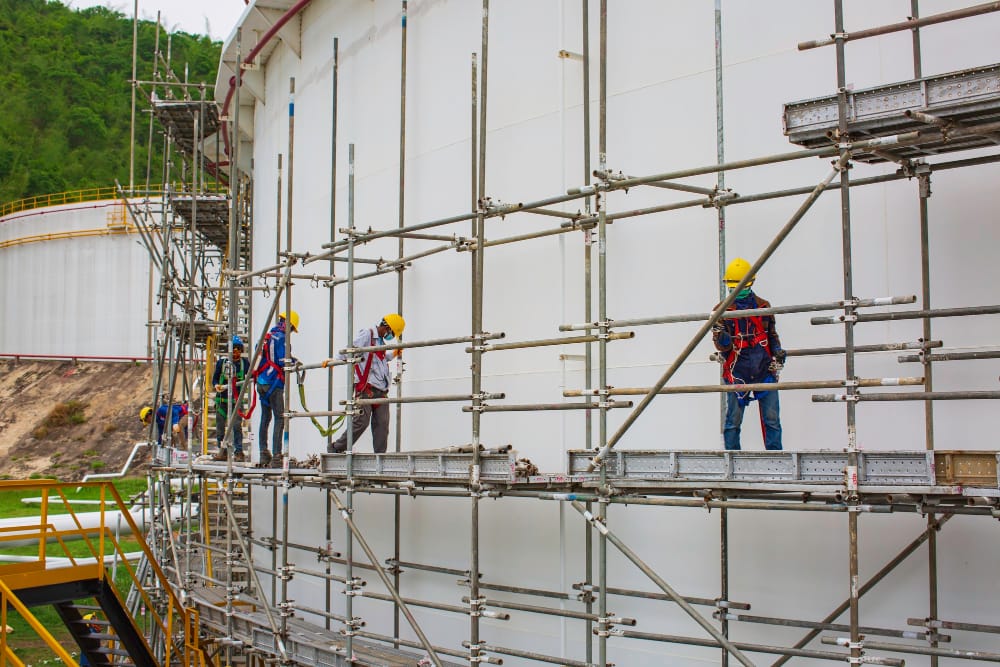
Ensuring the safety of workers on scaffolding is paramount. OSHA requires that all scaffolding be equipped with guardrails, midrails, and toeboards on open sides and ends of platforms that are more than 10 feet above the ground or floor level below. These safety measures serve to prevent falls and protect workers from potential hazards.
The top rail height is an essential factor in scaffold safety. For scaffolds manufactured and in service after January 1, 2000, the top rail height should be between 38 and 45 inches. For scaffolds manufactured and in service before January 1, 2000, the top rail height should be between 36 and 45 inches. This standard ensures adequate protection and helps prevent falls from scaffolding.
Midrails also play a crucial role in fall protection. They should be installed midway between the top rail and the working platform to provide an additional barrier against falls.
In addition to guardrails and midrails, toeboards must be installed on scaffolding to prevent tools, equipment, or materials from falling off the platform. Toeboards should be at least 3.5 inches in height and securely attached to the scaffold.
| Guardrail and Fall Protection | Requirements |
|---|---|
| Guardrails | Must be installed on open sides and ends of platforms more than 10 feet above the ground or floor level below. |
| Top Rail Height | For scaffolds manufactured and in service after January 1, 2000: between 38 and 45 inches. For scaffolds manufactured and in service before January 1, 2000: between 36 and 45 inches. |
| Midrails | Provide additional protection by being installed midway between the top rail and the working platform. |
| Toeboards | Prevent tools, equipment, or materials from falling off the platform. Must be at least 3.5 inches in height and securely attached to the scaffold. |
In situations where working on scaffolds more than 10 feet above a lower level poses a fall hazard, personal fall arrest systems or guardrail systems must be utilized. These systems provide an additional layer of protection to prevent falls and minimize the risk of injuries.
Proper training on fall protection procedures is crucial for all employees working on scaffolding. Fall protection training equips workers with the knowledge and skills to use personal fall arrest systems effectively and ensures their safety while working at heights on scaffolds. It is essential that employers prioritize fall protection training to create a safe working environment.
Scaffold Inspections

In order to ensure the safety and structural integrity of scaffolds, regular inspections should be conducted by a competent person. These inspections should be performed before each work shift to identify any potential issues or hazards that may compromise the scaffold’s stability or pose a threat to workers.
During these inspections, the competent person will carefully examine the scaffold, paying close attention to its components, connections, and overall condition. Any alterations or shifts that may have occurred since the last inspection should be thoroughly assessed, as they could have a significant impact on the scaffold’s safety.
The inspection should focus on assessing the structural integrity of the scaffold, ensuring that it is capable of supporting the intended load without failure. The competent person will evaluate the scaffold’s capacity to withstand the weight it is subjected to, as well as any potential changes to its structural soundness.
Furthermore, specific attention should be given to the inspection of suspension scaffold rigging. This includes examining the rigging components, such as ropes, pulleys, and connections, to detect any signs of wear, damage, or compromise to their structural integrity. Rigging inspection is particularly critical due to the potential hazards associated with a failure in suspension scaffold systems.
It is essential to establish a regular scaffold inspection frequency to maintain a safe working environment. In addition to the inspections before each work shift, periodic re-inspections should be conducted to ensure ongoing compliance and identify any potential issues that may have emerged over time.
The importance of scaffold inspections cannot be overstated. By diligently following a thorough inspection protocol, employers can proactively address any problems and rectify them promptly, minimizing the risk of accidents, injuries, and fatalities. Regular inspections contribute to the overall safety and well-being of workers, providing them with a secure environment in which to carry out their tasks.
Effective scaffold inspections are crucial for identifying and addressing any potential hazards or structural deficiencies that could compromise the safety of workers. By entrusting these inspections to competent individuals and conducting them at regular intervals, employers can ensure that their scaffolding systems maintain their structural integrity and provide a safe working environment.
Scaffold Inspection Checklist
| Inspection Area | Key Points |
|---|---|
| Scaffold Structure | – Check for any signs of structural damage or weakening – Assess the scaffold’s stability and connections – Ensure proper bracing and anchoring |
| Scaffold Components | – Inspect all platform planks or decking for damage or deterioration – Evaluate guardrails, midrails, and toeboards for secure installation – Examine ladders, stairs, and access points for stability and integrity |
| Suspension Scaffold Rigging | – Inspect ropes, pulleys, and connections for wear, damage, or deterioration – Verify the functionality of the suspension mechanism and counterweights – Assess the overall condition of the rigging system |
| Work Area | – Ensure proper housekeeping to prevent trip hazards and obstructions – Check for potential electrical hazards and ensure safe distance from power lines – Evaluate the surrounding area for stability and potential impact on the scaffold |
Different Types of Scaffolding
When it comes to scaffolding, there are various types available to meet the diverse needs of different projects. Understanding the different types of scaffolding is crucial for selecting the right one that will ensure worker safety and efficient construction practices.
Supported Scaffolds
Supported scaffolds are the most common type and are widely used in construction. These scaffolds rely on a sturdy framework of uprights, ledgers, and cross braces, providing a secure and stable platform for workers. Supported scaffolds are typically built from the base upwards, providing a solid foundation on the ground or other structural elements.
Suspended Scaffolds
Suspended scaffolds are commonly used when working at heights or in situations where access is required to the sides or top of a structure. These scaffolds are suspended by ropes from an overhead structure, offering flexibility and mobility. Suspended scaffolds are often used for tasks such as window cleaning, painting, or maintenance where a platform needs to be lowered or raised to different levels of a building.
Mobile Scaffolds
Mobile scaffolds, also known as rolling scaffolds or tower scaffolds, are easily movable and suited for smaller-scale projects or tasks that require frequent repositioning. These scaffolds consist of wheels or casters that allow them to be quickly and effortlessly moved to different locations. Mobile scaffolds are often used in industries such as painting, electrical work, or maintenance where workers need to move vertically and horizontally.
Scaffold Design and Load-Bearing Capacity
Designing scaffolds requires careful consideration of load-bearing capacity. Each type of scaffold has specific design considerations to ensure it can adequately support the intended load. Scaffolds must be designed, constructed, and loaded in accordance with the specifications of a qualified person. This ensures that the scaffold can safely accommodate not only the weight of the workers but also the materials and equipment used in the construction process.
| Type | Design Considerations | Load-Bearing Capacity |
|---|---|---|
| Supported Scaffolds | Sturdy framework construction, proper bracing, secure foundation | Capable of supporting its own weight and at least 4 times the maximum intended load |
| Suspended Scaffolds | Strong anchoring points, secure rigging, regular inspections | Capable of supporting its own weight and at least 4 times the maximum intended load |
| Mobile Scaffolds | Stability during movement, locking mechanisms, proper assembly | Capable of supporting its own weight and at least 4 times the maximum intended load, including the weight of workers and equipment |
Complying with OSHA standards and guidelines for scaffold design and load-bearing capacity is essential for ensuring worker safety and preventing accidents and structural failures.
Next, we will explore the importance of training and certification for scaffold safety requirements.
Importance of Training and Certification
When it comes to working with scaffolding, proper training and certification are essential. Employers have a responsibility to provide comprehensive scaffold safety training programs conducted by a qualified person. These programs educate employees about scaffold hazards, safety procedures, and the proper assembly and maintenance of scaffolds.
Scaffold safety training equips workers with the knowledge and skills necessary to navigate scaffolding safely, reducing the risk of accidents and injuries. It empowers them to identify potential hazards, implement appropriate safety measures, and ensure their own well-being and the well-being of their colleagues.
Workers who undergo scaffold safety training are educated on the importance of using the correct harnesses and fall protection equipment. This training emphasizes the proper use and maintenance of safety gear, ensuring workers are adequately protected from fall-related risks.
Beyond harness requirements, scaffold safety training also focuses on the proper assembly and maintenance of scaffolding. Workers learn about the various components of scaffolds, how to securely assemble them, and how to conduct regular maintenance to ensure their structural integrity.
By investing in scaffold safety training and certification, employers create a culture of safety and responsibility in the workplace. Workers become confident and competent in their ability to work with scaffolding, reducing the likelihood of accidents and promoting a safe working environment.
“Proper training is the key to working safely with scaffolding. It empowers workers to protect themselves and others, preventing accidents and ensuring a safer workplace.”
| Benefits of Scaffold Safety Training | Key Takeaways |
|---|---|
| 1. Increased awareness of scaffold hazards | 1. Scaffold safety training equips workers with knowledge and skills to identify scaffold hazards and implement appropriate safety measures. |
| 2. Proper use of harnesses and fall protection equipment | 2. Scaffold safety training educates workers on the correct use and maintenance of harnesses and fall protection equipment. |
| 3. Competence in scaffold assembly and maintenance | 3. Scaffold safety training ensures workers are capable of securely assembling scaffolds and conducting regular maintenance for structural integrity. |
| 4. Reduction in accidents and injuries | 4. With proper training, workers are better equipped to prevent accidents and injuries when working with scaffolding. |
| 5. Promotion of a safe working environment | 5. Scaffold safety training fosters a culture of safety and responsibility in the workplace, creating a safer environment for all workers. |
Consequences of Non-Compliance
Failure to comply with OSHA scaffolding requirements can have serious repercussions, exposing workers to accidents, injuries, and legal issues. Non-compliance not only jeopardizes the well-being of employees but also puts organizations at risk of facing significant fines and penalties.
When OSHA violations related to scaffolding occur, the consequences can be severe. Accidents resulting from non-compliant scaffolding can lead to life-altering injuries and even fatalities. Such incidents not only have a devastating impact on the individuals involved, but they also cause emotional distress and financial strain for their families.
Moreover, organizations found in violation of OSHA regulations may face substantial fines and legal battles. The fines imposed can be substantial, depending on the severity of the violations and the previous compliance history of the employer. Additionally, legal issues may arise, including lawsuits from injured workers or their families seeking compensation for damages.
By prioritizing adherence to OSHA scaffolding requirements, organizations can mitigate these risks and create a safer work environment for their employees. Taking proactive measures to ensure compliance, such as regular inspections and adequate training, significantly reduces the likelihood of accidents and associated legal consequences.
The Cost of Non-Compliance
The financial impact of non-compliance can be substantial. OSHA fines for scaffolding violations can range from hundreds to thousands of dollars for each violation, depending on the severity. Repeat violations or those resulting in severe injuries may lead to even higher penalties.
Furthermore, legal battles resulting from non-compliance can be lengthy and costly, consuming valuable resources. Lawsuits brought by injured workers seeking compensation can result in significant financial settlements or judgments against the organization.
Investing in compliance with OSHA scaffolding requirements is a proactive approach that can save organizations from both the financial burden of fines and the potential reputational damage that comes with a history of non-compliance.
Preventing Non-Compliance
To avoid the consequences of non-compliance, organizations must prioritize safety and implement robust safety programs that adhere to OSHA regulations. Key steps to prevent non-compliance include:
- Thoroughly understanding OSHA scaffolding requirements and ensuring all stakeholders are aware of their responsibilities.
- Regularly inspecting scaffolding systems to identify and address any potential hazards or deficiencies.
- Providing comprehensive training to employees on scaffold safety, emphasizing proper usage, inspection protocols, and fall protection measures.
- Maintaining accurate documentation of scaffold inspections, certifications, and employee training records.
- Engaging a competent person to oversee scaffold operations and ensure compliance with OSHA regulations.
Average OSHA Fines for Common Scaffolding Violations
| Violation | Average Fine |
|---|---|
| Failure to provide fall protection | $5,000 – $70,000 |
| Insufficient scaffold platform construction | $3,000 – $15,000 |
| Lack of scaffold training and certification | $5,000 – $10,000 |
| Inadequate scaffold inspections | $2,000 – $7,000 |
Source: OSHA fines database (2022)
These fines are not exhaustive and may vary depending on the specific circumstances of the violation and the discretion of OSHA inspectors.
Safeguarding worker safety and protecting organizations from costly fines and legal troubles requires continuous commitment to compliance with OSHA scaffolding requirements. By doing so, employers can create a culture of safety, reduce accidents, and promote the well-being of their workforce.
Conclusion
Adhering to OSHA scaffolding standards is paramount for ensuring workplace safety and protecting workers across various industries. These regulations provide a comprehensive framework that minimizes the risk of accidents and guarantees the structural integrity of scaffolding systems.
Ongoing education and training play a vital role in reinforcing scaffold safety practices. By equipping workers with the necessary knowledge and skills, employers can foster a culture of responsibility and empower their employees to prioritize safety at every step of their work.
Furthermore, with the continuous advancements in technology, the future of scaffold safety appears promising. Innovative solutions, such as enhanced monitoring systems and digital tools for inspections, are set to revolutionize the industry, making it even more efficient and reliable.
As we move forward, embracing these technological developments and staying informed about the latest OSHA regulations will be crucial for organizations and workers alike. By collaborating and striving towards a safer work environment, we can ensure that scaffold-related incidents become a thing of the past, and everyone can go back home safely at the end of the day.
Frequently Asked Questions
What are OSHA scaffolding requirements?
OSHA scaffolding requirements are regulations established by the Occupational Safety and Health Administration (OSHA) to ensure the safety of workers using scaffolding in various industries. These requirements cover aspects such as weight capacity, structural integrity, platform construction, guardrail and fall protection, scaffold inspections, different types of scaffolding, and the importance of training and certification.
How should scaffold platforms be constructed?
Scaffold platforms on all working levels must be fully planked or decked. The space between adjacent platform units and the space between the platform and the uprights should not exceed 1 inch, unless a wider space is necessary to fit around uprights. The platform should extend over its supports by at least 6 inches but not more than 18 inches. The front edge of platforms must not be more than 14 inches from the work face, unless guardrail systems are in place for fall protection. Platforms used solely as walkways or by employees involved in scaffold erection or dismantling may have specific requirements.
What are the requirements for guardrails and fall protection on scaffolding?
All scaffolding must be equipped with guardrails, midrails, and toeboards on open sides and ends of platforms more than 10 feet above the ground or floor level below. The height of top rails should be between 38 and 45 inches for those manufactured and in service after January 1, 2000, and between 36 and 45 inches for those manufactured and in service before January 1, 2000. Personal fall arrest systems or guardrail systems must be used when working on scaffolds more than 10 feet above a lower level. Employees must receive training on fall protection procedures.
How often should scaffold inspections be conducted?
Scaffold inspections should be conducted before each work shift by a competent person to ensure their structural integrity and stability. Any alterations or shifts that could affect the scaffold’s safety must be immediately addressed. Suspension scaffold rigging should be inspected before each shift, especially for potential structural compromises or damage. Regular intervals and re-inspections should be implemented.
What are the different types of scaffolding?
There are various types of scaffolding, including supported scaffolds, suspended scaffolds, and mobile scaffolds. Each type requires specific design and construction considerations, including load-bearing capacities. OSHA has detailed standards for each type of scaffold to ensure worker safety and prevent accidents.
Why is training and certification important for scaffold safety?
Proper training and certification are vital for workers handling scaffolding. Employers need to provide comprehensive training programs conducted by a qualified person to educate employees about scaffold hazards, safety procedures, and proper assembly and maintenance. Scaffold safety training ensures workers are equipped with the knowledge to safely navigate scaffolding and prevent accidents.
What are the consequences of non-compliance with OSHA scaffolding requirements?
Failure to comply with OSHA scaffolding requirements can lead to severe consequences, including accidents, injuries, fines, and legal issues. Non-compliance poses significant risks to worker safety and can result in penalties for organizations. It is essential to prioritize adherence to OSHA regulations to maintain a safe work environment and avoid any potential legal and financial ramifications.


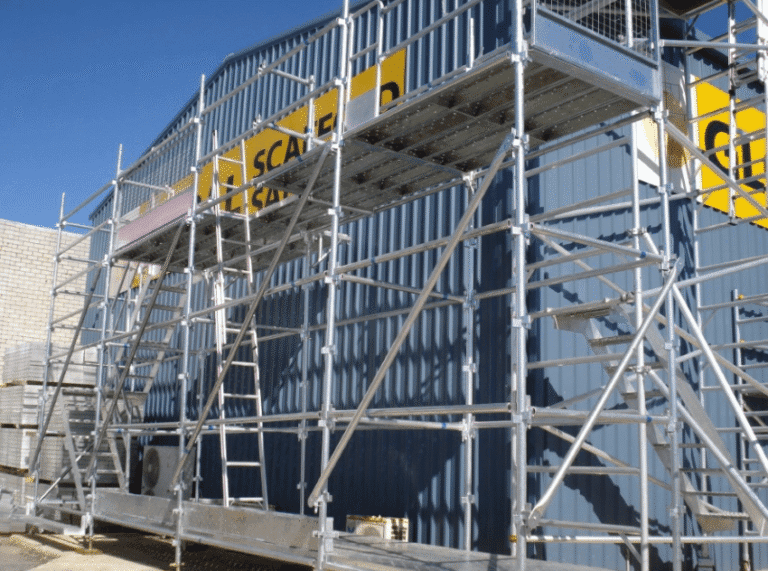


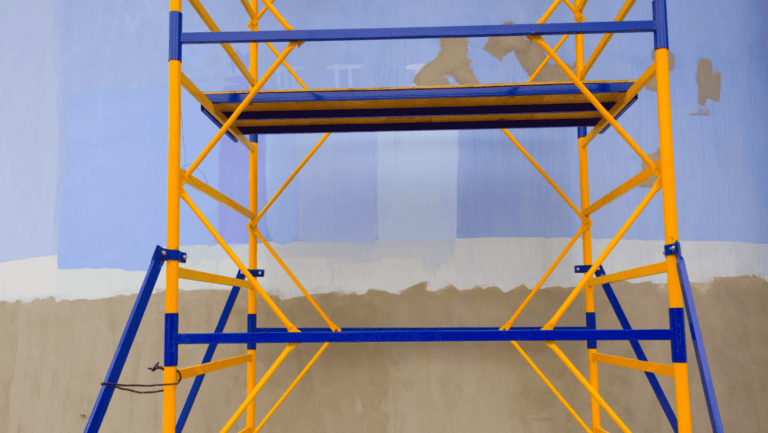


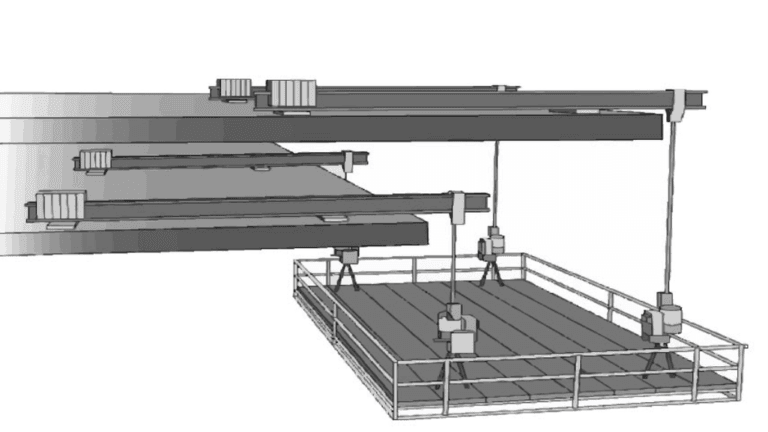

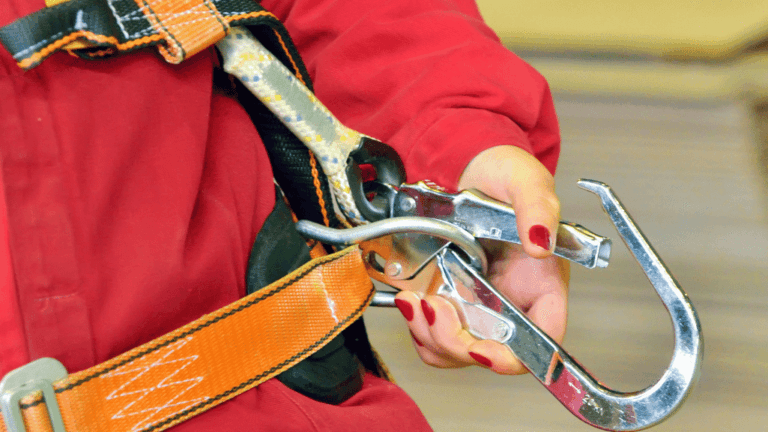
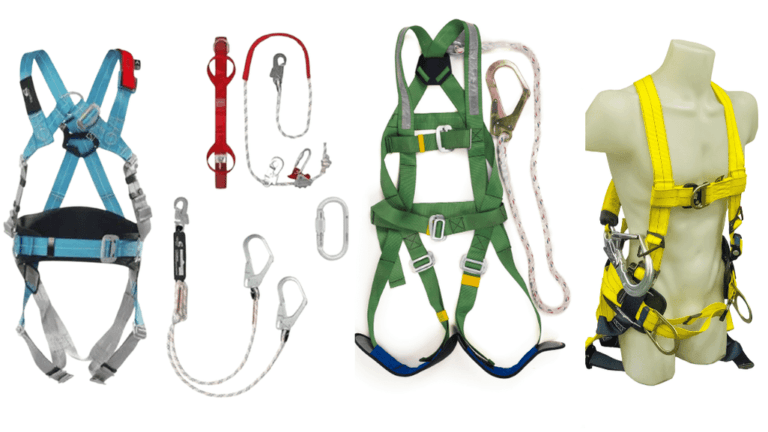
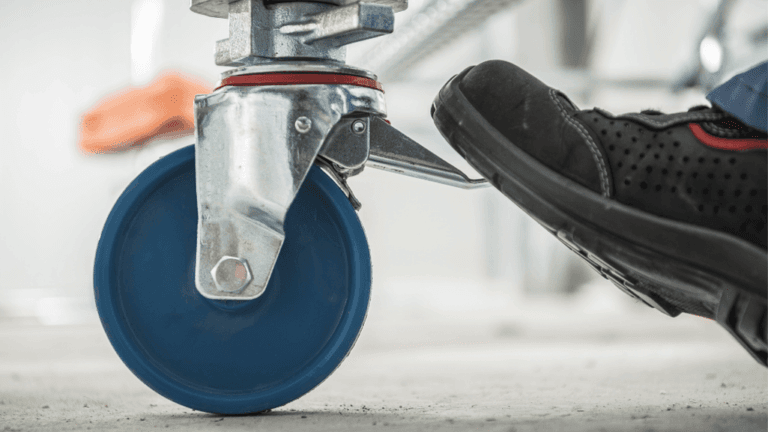





[…] OSHA Scaffolding Requirements Guide 2024 | Ensure Construction Safety OSHA (Occupational Safety and Health Administration […]